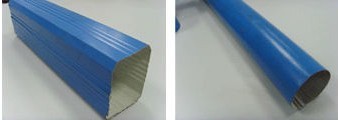
Understanding Rain Gutter Making Machines Efficiency and Innovation in Construction
In modern construction and building maintenance, the importance of effective water drainage systems cannot be overstated. Rain gutters play a crucial role in directing rainwater away from roofs and foundations, preventing potential damage to structures. With the increasing demand for customized, high-quality rain gutters, the rain gutter making machine has emerged as a remarkable innovation in the industry.
What is a Rain Gutter Making Machine?
A rain gutter making machine is a sophisticated piece of equipment designed to manufacture various types of rain gutters, including K-style, half-round, and box gutters. These machines enable manufacturers to produce gutters in continuous lengths, tailored to specific dimensions and materials required for individual projects. Typically, they utilize metal sheets made from materials such as aluminum, copper, or galvanized steel, which are then formed and shaped into the desired gutter profiles.
The Working Principles
The operation of a rain gutter making machine is relatively straightforward yet highly efficient. The process begins with feeding a coil of metal into the machine. As the metal moves through a series of rollers, it undergoes several transformations, including flattening, bending, and cutting. Advanced models may incorporate computer numerical control (CNC) technology, allowing for precise adjustments and consistent production quality.
Key components of a rain gutter making machine include
1. Feeding Mechanism Ensures a continuous feed of raw material. 2. Roll Forming Station Where the metal is shaped into the desired gutter profile. 3. Cutting Unit Cuts the formed gutters to the required lengths. 4. Control Panel Provides operators with the ability to monitor and adjust settings for efficiency and accuracy.

Benefits of Using Rain Gutter Making Machines
1. Customization One of the primary advantages of using these machines is the ability to create custom gutter lengths and profiles based on specific project requirements. This flexibility is invaluable for contractors looking to meet precise architectural designs or local building codes.
2. Time Efficiency Rain gutter making machines streamline the production process, significantly reducing manufacturing time compared to manual methods. This efficiency translates to quicker project timelines and reduced labor costs.
3. Quality Control Automated machines ensure consistent quality across all produced gutters. With precise measurements and uniform material handling, the likelihood of defects is minimized, resulting in a more reliable final product.
4. Cost-Effective Production Businesses can optimize their operations and reduce material waste through continuous production methods. Efficient use of raw materials also helps in controlling costs, making the manufacturing process economically viable.
5. Scalability As demand for rain gutters fluctuates, manufacturers can easily scale up production without compromising quality. This adaptability is particularly beneficial during peak construction seasons.
Conclusion
As the construction industry evolves, so do the tools and technologies that support it. The introduction of rain gutter making machines represents a significant step towards enhancing efficiency, quality, and customization in gutter production. These machines not only meet the rising demand for high-quality rainwater management solutions but also contribute to the overall durability and longevity of structural integrity. Investing in a rain gutter making machine is a forward-thinking choice for manufacturers and contractors committed to delivering superior products and services in an increasingly competitive market. As we continue to address the challenges posed by changing weather patterns, innovations in drainage solutions will remain vital for safeguarding our buildings and infrastructure.